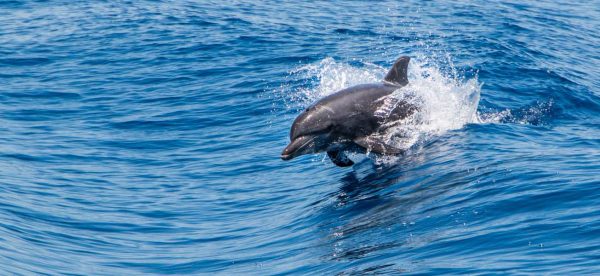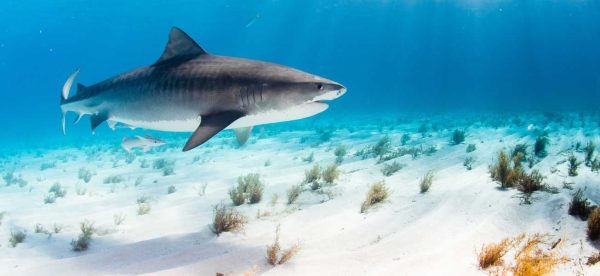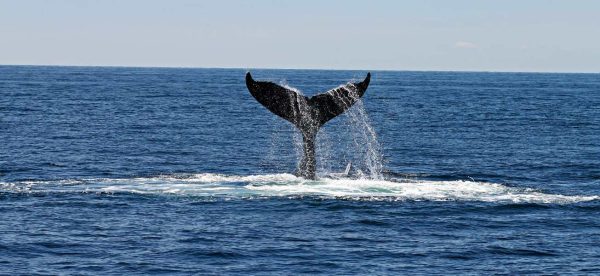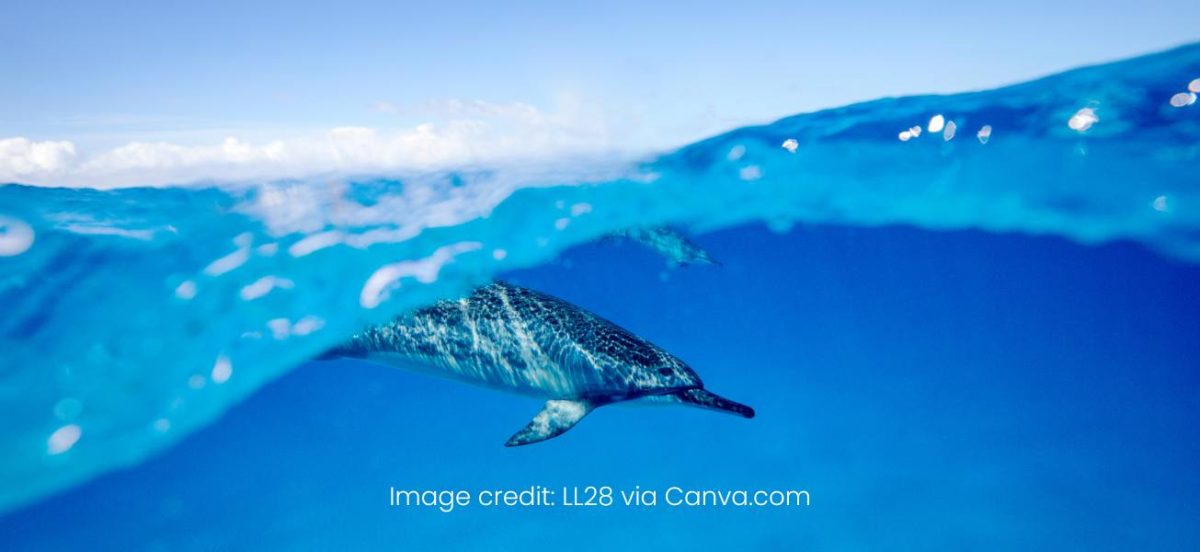Dolphin dialects: A whistle stop tour
It is well established that dolphins are sound-producing marine mammals, relying on sound to communicate, navigate, and find food. But a 2024 study suggests they also have regional accents!
In this study, scientists recorded two groups of bottlenose dolphins living far apart in New Zealand, discovering that these dolphins have different types of whistles, much like regional dialects. One group mostly made upsweep and sine whistles, while the other group preferred convex and sine whistles.
Upsweep whistles start with a low-pitched sound, progressively increasing until they end on a high-pitched sound. Sine whistles produce a consistent tone with only slight pitch fluctuations, and convex whistles sharply rise in pitch before abruptly descending. These whistle types get their name from the way they look when they are visualised on a graph.
Using a machine learning model, the scientists could tell which group a dolphin belonged to based on their whistle, with a very high success rate of 90%. This showed how dolphins in these two groups have very different ways of communicating, despite being the same species.
The group stated that the reason for these different whistles is likely because the dolphins live in different places, not because of how many dolphins are in a group or how old they are.

Image: taylanibrahim via Canva.com
Shark proof your swim
We are fighting to remove shark nets, and these clever researchers are helping our case!
The need for modern, evidence-based shark mitigation strategies is stronger than ever. The good news? Scientists are finding better ways to keep people safe from shark interactions. In a recently published Nature paper, two electric shark deterrents were put to the test against the three species responsible for the most fatal shark interactions (bull, tiger, and white sharks).
The devices don’t harm sharks, as they have a built in sense called electroreception that enables them to process electrical signals. It is similar to creating a bad smell to drive people out of a room!
The devices made it much less likely for a shark to bite, with bite probability decreasing by 54-69% when they were in use. The devices also increased the time for a bite to occur, and made the sharks stay away for longer. These findings suggest that personal deterrent devices have great potential for protecting ocean users from negative human-shark interactions. Which is a lot more than can be said about shark nets!

Image credit: yfhishinuma via Getty Images
Whale watch from a water sample
Humpback whales are vital for a healthy marine ecosystem, but their numbers are declining. To better understand and protect them, scientists are looking for new ways to study these whales.
Traditionally, scientists have collected small biological samples from whales to study their DNA, but this is difficult and can prove stressful to the animals. It also means whale populations can only be confirmed with direct observation. A new sampling method known as environmental DNA (eDNA) involves collecting water samples where whales have been located, and can be done even after they have left the area. These samples can contain tiny pieces of whale DNA, which can be analysed to learn about the whales without disturbing them.
Researchers in British Columbia collected water samples from places where humpback whales were seen and successfully found whale DNA in some of them. This is an exciting discovery because it shows that studying whale DNA from water samples is possible, and the correct primers have been identified – a helpful tool for protecting them in the future!

Image credit: Andrea Holien via Pexels
Porpoises as ocean floor architects
Scientists have long thought that strange holes found on the ocean floor were caused by gas or liquid escaping from beneath the seabed. However, new research suggests a completely different explanation.
Using high-tech sonar, researchers discovered thousands of small, unusual holes in the North Sea. These holes didn’t look like the ones caused by gas or liquid. Instead, they believe these holes were created by porpoises, a type of marine mammal similar to a dolphin.
It seems that porpoises dig into the seabed to find food, like small fish called sand eels. As they dig, they create these holes, which then get bigger over time due to water currents.
This discovery is surprising because it shows that animals can have a huge impact on the shape of the ocean floor, shaping their own habitats, rather than the previously accepted theory that geological impacts were responsible.
Our oceans are incredible – and these marine animal studies highlight just how much we are still finding out!
Keep informed on the risks faced by dolphins and small whales, and the global efforts to protect them.Subscribe to our newsroom
